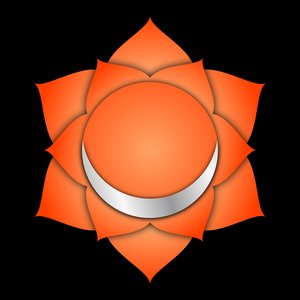If you are wondering what Chakra means know now that it is derived from a Sanskrit word which means wheel. Now when talking about the chakras in the body, we are referring to the life force which spins and rotates inside of us all beginning from the base of the spine and going all the way to the top of the head. There are seven main chakras present in the center of the human body and they govern every area of one’s life, starting from the physical to the mental and down to the spiritual.
Here is a breakdown of the seven major chakras in the human body:
The Root chakra or Muladhara.
The seven major chakras in the human body start with the root chakra which is popularly known as Muladhara. It is located at the end of the spine in the body, just at the base of the pubic bone; the root chakra affects body part in the lower body region such as the hips, legs, lower back and sexual organs. The root chakra is red in color and works by providing necessary support essential in the feeling of safety, security and everything you need to survive here on earth. In other words the Muladhara provides financial and emotional security. All you need to succeed in your daily activities is provided by this chakra however, you may experience some issues if it gets blocked.
Common ailments that could occur as a result of a blocked root chakra include: anxiety and depression, frustration, digestive disorders, hip pain, prostate issues, etc.
The Sacral Chakra or Svadhisthana.

When the sacral chakra is repressed or blocked, it often results into physical, emotional and even sexual issues; a good way to balance up this second chakra is to find and express pleasure in the things you do and then transmit the energy drawn from the pleasurable acts into your heart.
The Solar Plexus chakra or Manipura.
The third chakra has a bright yellow color. It is called the solar plexus chakra because it is located some inches above the navel in the solar plexus region. The body parts for the third chakra are: the stomach, small intestine, gall bladder, and pancreas. It acts as the controlling force behind personal power, self-esteem, confidence levels, impulses and strength, leaving an individual feeling capable, self-sufficient and in charge of his/her emotions.
Therefore, people whose third chakra is unbalanced are likely to experience feelings of self-depreciation, confusion and lack of self-esteem; it could also cause digestive disorders and imbalances in the internal organs. To balance your Manipura, start by dwelling on your abilities and strengths and indulge yourself in positive affirmations.
The Heart chakra or Anahata.

The Heart chakra is easily put out of balance during hurtful situations involving heartbreaks therefore it may make you feel paranoid, indecisive and possibly make you afraid to make your heart love again.
The Throat chakra or Vishuddha.
The fifth – throat chakra is the situated right in the center of the throat and it carries the sole responsibility of portraying creativity through thoughts, speech and writing; it is also the center of communication and sound. The throat chakra is vivid blue and it affects body parts like: the neck, shoulders, arms, thyroid and parathyroid glands. This chakra enables you to understand your mind and express it to others clearly.
When it is out of balance you are likely to experience timidness, weakness and inability to express your thoughts to others.
 The Brow chakra or Ajna.
The Brow chakra or Ajna.

Blockage of the sixth chakra often results in mental issues like depression, low self-esteem and diminished intuition.
The Crown chakra or Sahasrara.
The seventh and last chakra (crown chakra) is in color violet and it is located on the top of the head and it can be linked to the central nervous system and the pituitary gland; it plays the function of transmitting wisdom, awareness of the extraordinary and a deep connection with the true source of Life.
Blockage of this chakra causes a negative reaction such as constant weariness, sorrow, frustration and depression.
It is quite important to indulge yourself in regular chakra cleaning because it contributes a great deal to your overall health. You can carry out thorough cleaning of your chakra by yourself at home or seek for the help of a professional in fueling up your chakras, to this effect you’ll carry out daily meditation exercises, cleansing baths, practicing love, prayer, etc. Remember that your seven chakras are in charge of all areas of your life therefore keeping them in mint condition is to your personal advantage!
















